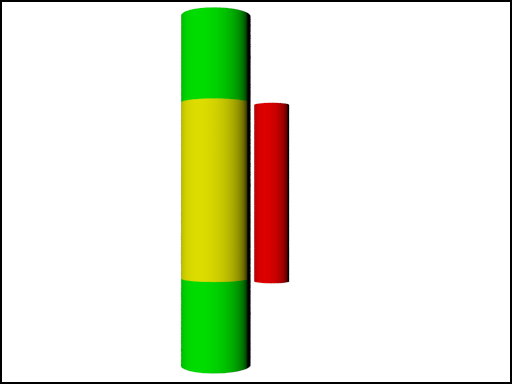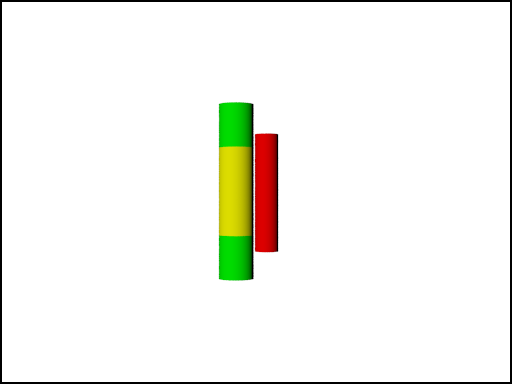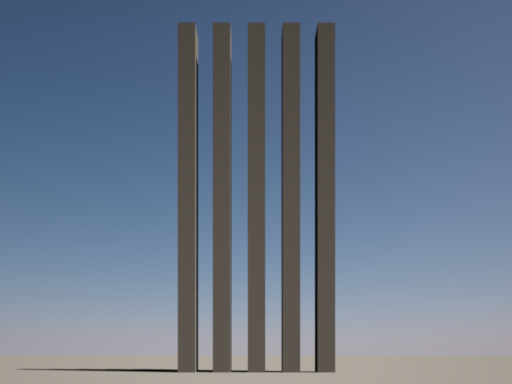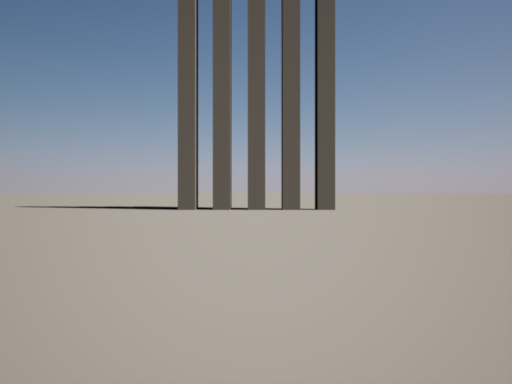Field of View & Focal Length
The Field of View (or just short 'FOV') of a camera describes how much of the scene is visible from the camera, or how "wide" or "zoomed-in" the view appears, and as a consequence, how large or small objects appear in the frame. FOV is measured in degrees, horizontally and vertically. Larger FOV values indicate that more of the scene is visible and therefore objects will appear smaller, whereas smaller values mean less of the scene is visible and objects will appear larger.
The Focal Length of a camera, usually measured in millimeters, is the distance from the film or sensor back to the optical center of the lens. There is a direct (non-linear) relationship between focal length and FOV. Longer focal lengths result in narrower FOVs, while shorter focal lengths result in wider FOVs. There is a direct linear relationship between focal length and the apparent size of the subject in the frame. For example, doubling the focal length will make the subject twice as large in the frame.
The relationship between focal length and FOV depends on the physical size of the film or sensor onto which the image is projected (Sensor Size (Film Gate)). For 35mm film cameras or so-called "full frame" digital cameras, this size is 36mm x 24mm. For such cameras, commonly used focal lengths are:
- 18mm to 28mm for wide-angle shots like landscapes, cityscapes, tight interiors or dramatic shots with a lot of foreshortening
- 35mm to 55mm for shots with "natural" looking perspective
- 80mm to 200mm for long shots and portraits
- 200mm to 1200mm for extremely long shots such as those taken in wildlife or sports photography or other cases where you wish to reduce the effect of foreshortening
Zooming vs. Moving
Changing the focal length or FOV is only one way to control the size of an object in the frame ("zooming in" or "zooming out"). The other way is to actually move the camera closer or farther away from the subject. Note that these are not equivalent and will result in very different looks. While the focal length/FOV changes the size of a single object in the frame, the relative sizes of 2 objects in the scene depends
ONLY on the location of the camera relative to these objects. Thus framing a scene with multiple subjects involves positioning the camera to achieve the desired blocking and relative sizes of the subjects,
THEN adjusting the Focal Length to achieve the desired overall framing.
In the following example, the two cylinders in the scene are the same height (10). We position the camera such that the red cylinder is approximately ½ the size of the green/yellow cylinder. We then show the effect of first making the focal length wider and of moving the camera
|
|
|
|
|
_Focal Length = 50mm – Red cylinder is roughly ½ the height of the green/yellow cylinder._ |
_Focal Length = 24mm – Focal length changed, no camera movement. Notice the red cylinder still ½ the height of the green/yellow cylinder, but more of the background is exposed._ |
Focal Length = 50mm – Camera moved farther from subjects to make the green/yellow cylinder roughly the same size in the frame as in the previous image. Notice that the red cylinder is now much large relative to the green/yellow cylinder. |
Lens Shift
In most consumer cameras, the lens is centered on the imaging plane (film back or sensor). However some professional cameras include the ability to adjust the offset of the lens with respect to the sensor. This lens offset is usually referred to a shift. Shift can be used to maintain a certain perspective while changing the composition of the image, or more commonly, to correct for the natural perspective distortion that occurs when photographing a building or other large structure from the ground.
The cameras Film Offset parameters are controling this effect.
|
|
|
|
|
Image taken by rotating the camera up to capture the full height of the subjects. Notice the significant perspective distortion. |
Image taken with camera at the same location, with same focal length, but using shift instead of rotating the camera. Notice that we no longer suffer from perspective distortion. |
Image taken using the same settings as the previous image, but without any shift. |





